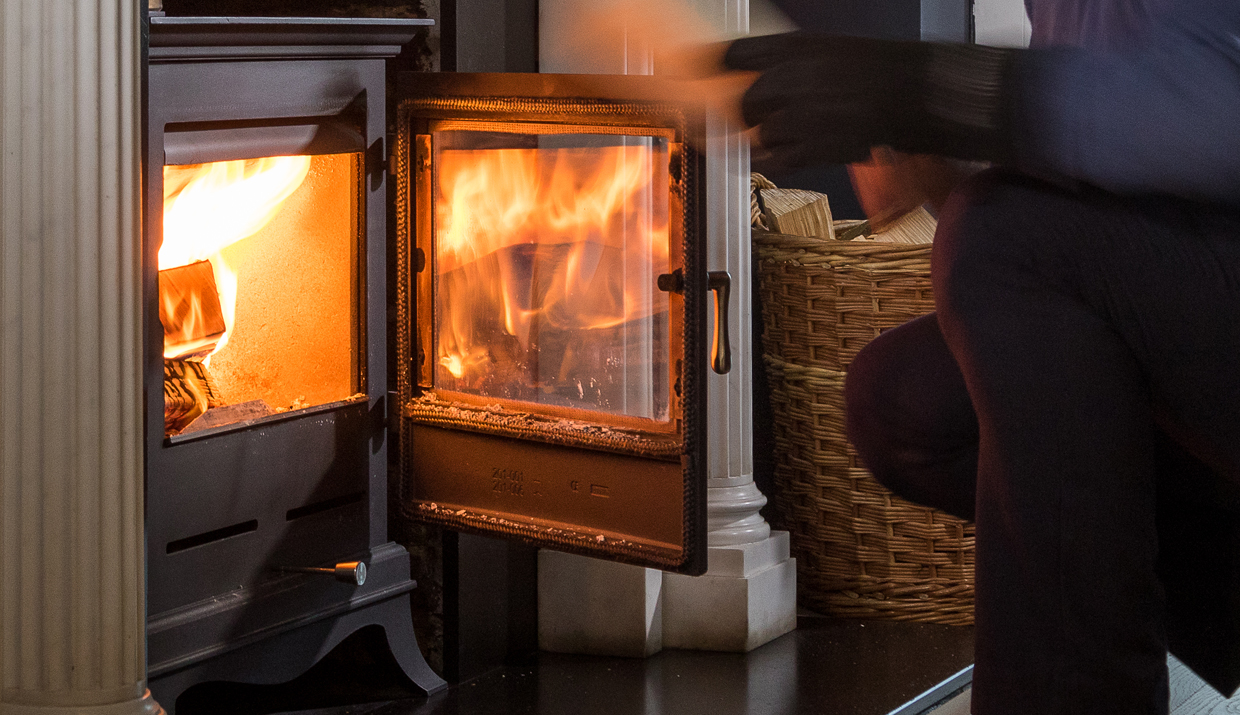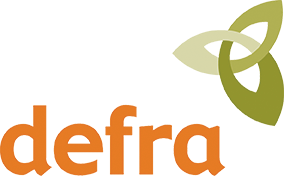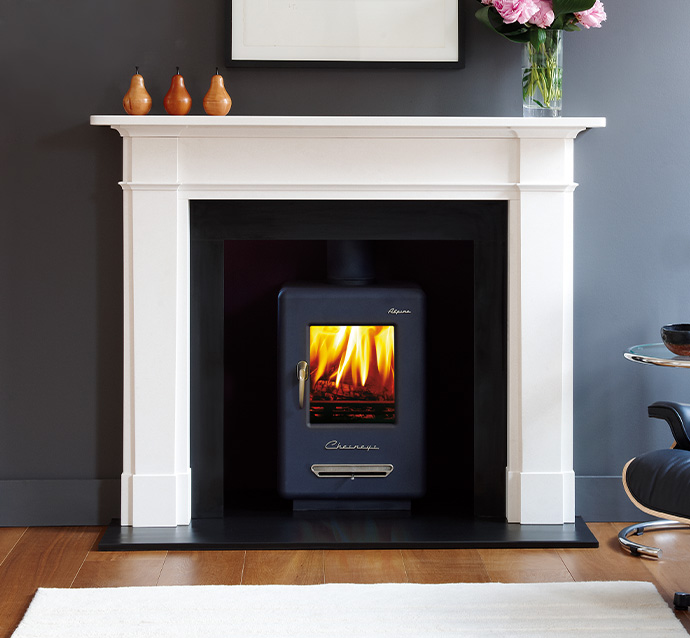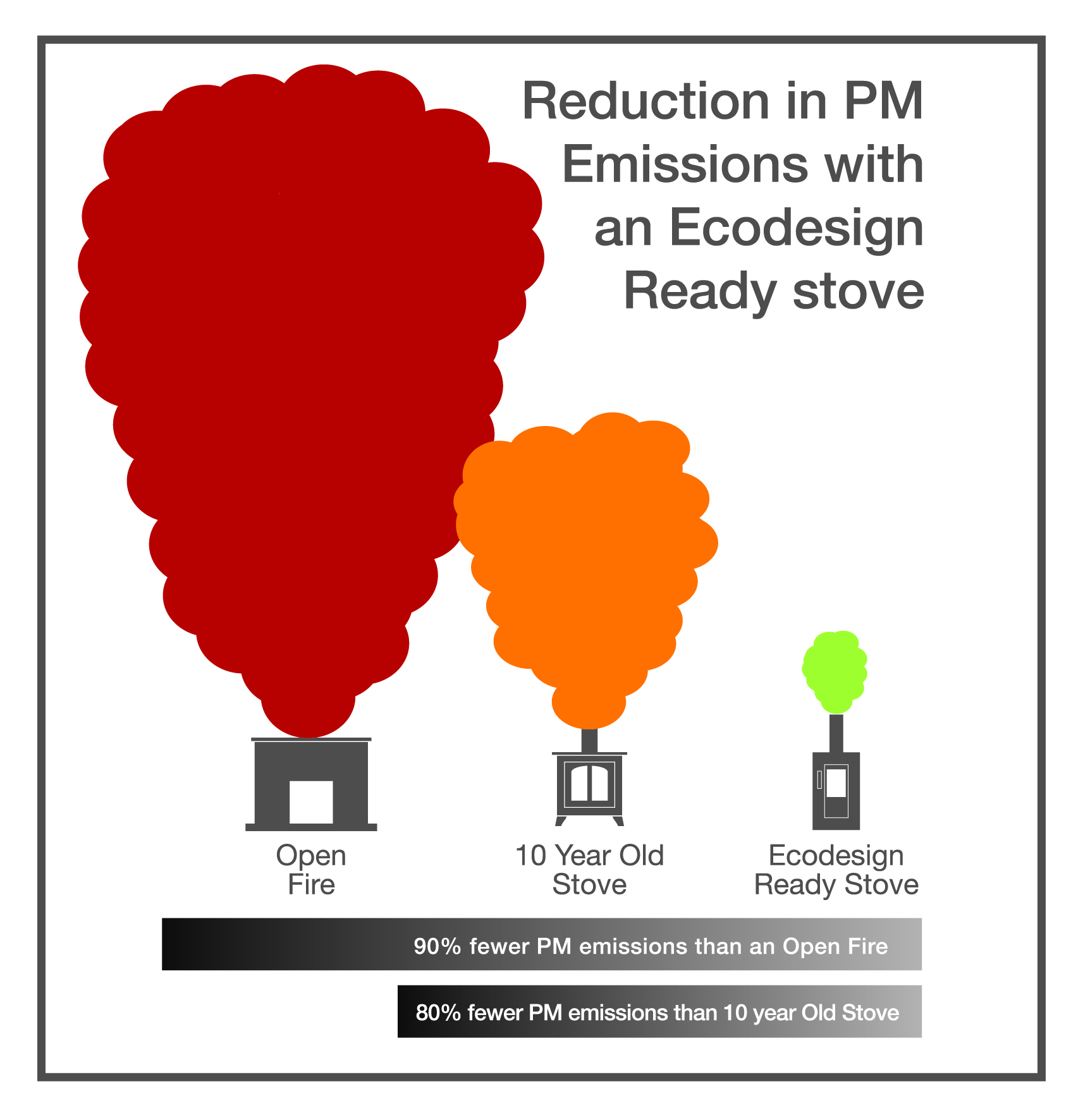

Most people will have read or seen something in the media about wood burning stoves over the past few months.
Some of the coverage has been fair and well informed but a lot has been alarmist and misleading.
Just one example of this was an article The Guardian newspaper published recently stating, and I quote exactly, that “wood burners are in effect to be banned in new and refurbished homes in London”. The article, and many others with similar headlines, are referring to the Air Quality Neutral Planning Guidance introduced by The Mayor of London, Sadiq Khan in February of this year. What the Planning Guidance in fact said was that new large-scale developments must improve air quality with developers being required to consider air quality at every stage of the design process. “ The guidance does not apply to private householders wanting to install a stove or to small-scale developments – so the Guardian journalist either failed to read the Planning Guidance or worse, willfully misinterpreted it in search of a sensationalist headline.
Understandably people are confused and concerned by this type of reporting so we thought it would be helpful if we provided a clear and accurate explanation of key aspects of the wood burning debate.
I’d like to start with the current rules and regulations affecting the sale and manufacture of wood burning stoves.

Let’s take smoke control areas first.
Many towns and cities are designated smoke control areas by the Government and it is illegal to use an appliance that emits a substantial amount of smoke from a chimney in these areas. It is legal to sell and use a wood burner in these areas but only if it has been tested and meets the standards for efficiency and emissions that DEFRA (The Department for Environment, Food and rural Affairs) prescribes. DEFRA publish a list of all those appliances by model and by manufacturer that have been approved for sale. These are known as exempt appliances.

You may have heard about Eco-design stoves.
EU legislation requires new solid fuel burning appliances (including log burners) to meet minimum efficiency standards and maximum emission limits before they can be legally sold. Although the UK is no longer a part of the EU, it is committed to this legislation and Ecodesign standards were introduced for all new stoves in January 2022. Unlike the DEFRA scheme these standards apply to Stoves wherever in the country they are sold and installed.
Finally, an independent certification scheme was launched in 2020 known as TheClearskies scheme.This is administered by KIWA, an accredited test laboratory and certification body. Under the Clearskies scheme wood stoves are given different ratings dependent on their performance. A stove designated Level 5 will have emissions that are 30% lower than an EcoDesign stove and a higher level of efficiency.

I’d next like to explain what is meant by emissions. A few years ago, the primary measure of a stove was its efficiency. Emissions were a consideration but were given less prominence than efficiency. Today, efficiency is still an important measure of every stove, but emissions have taken centre stage as we have become more aware of the harmful effects of air pollution. The most significant of these are what is known as Particulate Matter, commonly referred to as PMs.
PMs that are les than 2.5 micrometers in size as these are the most harmful as they are easily absorbed into the body potentially affecting the heart, lungs and brain with adverse health consequences. These are known as PM2.5 emissions and are used as a measure of the quality of the air that we breathe.
There are many sources of PMs including agriculture, industry, transport and domestic. The Government definition of domestic sources includes outdoor burning of garden waste, the use of fire pits, open fires, barbecues and multi-fuel or wood burning stoves. With the exception of stoves all of these sources release completely unfiltered PM emissions. Stoves should be viewed separately because a modern Ecodesign compliant stove will remove the majority of these harmful emissions. To give some context a modern Eco design stove will produce 90% less emissions than an open fire or fire pit and up to 80% less than an old wood burning stove.
The National Statistics for Emissions of Air pollutants in the UK were published last month. The data shows that domestic combustion including all the categories that I just mentioned account for 27% of all PM2.5 emissions.
But what contribution do wood burners make to this % ?
The Stove Industry Alliance have calculated the split of these emissions between three major domestic sources. They estimate that modern Ecodesign Stoves account for just under 5% of domestic PM2.5 emissions, whilst Open Fires ( indoor and outdoor) and older stoves account for 60% and 35% respectively.
So, if we look at the contribution of modern stoves to the overall level of all PM2.5 emissions and not just the 27% that are from domestic sources, they account for just over 1% of all PM2.5 emissions. Not necessarily the conclusion you might reach from some of the press coverage.
A lot of people are now asking what the future is for wood burning stoves.
There is a clear answer to this question in the Government’s environmental improvement plan, which was published at the start of this year.
Clearly air pollution is and should be a concern. With this in mind, the Government’s Environmental Improvement Plan introduce a number of new initiatives in many areas including the treatment of wood burning stoves. Key measures include :
- Banning the sale of house coal for domestic use completely
- Banning the sale of wet wood in smaller packets as burning wood with a low moisture content will reduce emissions by up to 50%
- Introduce financial penalties for local authorities to enforce the laws in smoke control areas
- Increase further the performance standards that exempt stoves in smoke control areas must meet.
The plan states unequivocally that Government “are not considering a ban on domestic burning in England but that measures should be implemented to drive a shift towards newer appliances which meet tough new emissions standards”
Similarly, the chief medical officer Chris Whitty’s annual report on air pollution published in December 2022 stated that air pollution emissions can be reduced by using a modern stove and burning wood that is dry.
So, the message is clear. Wood burning stoves aren’t about to be banned but there is a world of difference between burning a modern stove and using an open fire or an older stove. The technology used in stoves is constantly being improved to make them cleaner and regulatory bodies are setting ever higher standards for emissions and efficiency.
A wood burning stove isn’t just a fashion accessory. It will generate enormous heat and used with the correct fuel it will produce very low emissions. Finally, using a modern wood stove will result in a lower carbon footprint. Burning wood for domestic heating is approximately one tenth as carbon intensive as using gas or electricity providing you’re using renewable sustainably sourced fuel.
